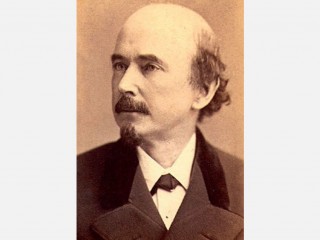
Dion Boucicault biography
Date of birth : 1820-12-26
Date of death : 1890-09-18
Birthplace : Dublin, Ireland
Nationality : Irish-American
Category : Famous Figures
Last modified : 2011-02-23
Credited as : Playwright, actor,
The Irish-American playwright and actor Dion Boucicault was a theatrical rather than a dramatic talent, more an adapter than a creator of plays. He was noted for ingenious stage effects.
Dion Boursiquot, later Boucicault, was born in Dublin on Dec. 26, 1820, a year after his mother's divorce from a wine merchant. When the budding actor dropped out of London University in 1837, he turned to the stage. His first success was London Assurance (1841), which imitated the earlier English comedy of manners. Because of the lack of an international copyright law, theater managers found it more profitable to adapt French plays than to gamble on untried native ones, so Boucicault became an adapter. He lived in Paris from 1844 to 1848, where he was married and shortly widowed.
In London he adapted French romantic melodrama for Charles Kean and learned from him the technique of staging sensational scenes—a knowledge that would serve him well in America. In 1853 Boucicault "eloped" with Agnes Robertson, a London star, to New York, where for many years she played leading roles in his plays. He branched out from costume melodrama to quasi-realistic and topical plays filled with sensational theatrical effects. The Poor of New York (1857) was based on the financial panics of 1837 and 1857. Jessie Brown or The Relief of Lucknow (1858) dramatized the Sepoy mutiny in India. Produced shortly before the Civil War, The Octoroon (1859) portrayed the love of a slave-holder for his beautiful slave. It was explosive material for Americans; yet, remarkably, the play was praised by both North and South. Though Boucicault brought Dickens's and Scott's tales to the stage, his most famous production from popular fiction was Rip Van Winkle (1865) for Joseph Jefferson, who continued to act the role into the 20th century.
The playwright's most lasting work, however, was with his native Irish material, notably The Colleen Bawn (1860), Arrah-na-Pogue (1864), and The Shaughraun (1874). Though later Irish dramatists were to disparage Boucicault, his native plays are full of comic roguery and the combination of farce and melodrama recognizable later in Synge, O'Casey, and Shaw.
In 1885 Boucicault disavowed marriage with Agnes Robertson, with whom he had lived for 32 years, and eloped with a young actress. Until his death in 1890 he lived with his wife, writing unsuccessful plays and teaching in an acting school in New York.
In 53 years in the theater Boucicault made contributions beyond his fine performances and almost 150 plays. He was the first to develop fireproof scenery; he advocated theater workshops for the training of actors; he campaigned for copyright law which would give the playwright ownership of his play. He developed the road company, which replaced local stock companies, thus improving the quality of provincial theater and making the star less important than the integrity of the play and its direction. Boucicault recognized that his plays were merely melodramatic and external, but he insisted that his first duty was to please the public, and this he did with immense success.
Townsend Walsh, The Career of Dion Boucicault (1915), is the best full-length study. Arthur H. Quinn, A History of the American Drama from the Beginning to the Civil War (1923; 2d ed. 1943), contains a sound review of Boucicault's plays, especially those produced in America. David Krause, ed., The Dolmen Boucicault (1964), provides an excellent introduction, with emphasis on the importance of the Irish plays.
















